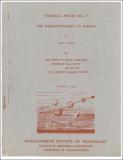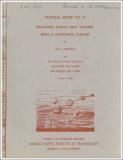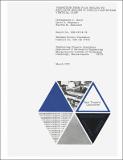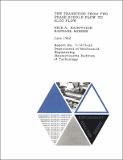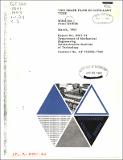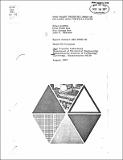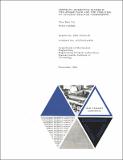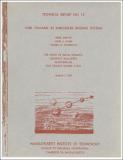Browsing Heat Transfer Laboratory Technical Reports by Title
Now showing items 71-80 of 80
-
Thermal non-equilibrium in dispersed flow film boiling in a vertical tube
(Cambridge, Mass. : M.I.T. Dept. of Mechanical Engineering, [1966], 1966)The departure from thermal equilibrium between a dispersed liquid phase and its vapor at high quality during film boiling is investigated, The departure from equilibruim is manifested by the high resistance to heat transfer ... -
The thermodynamics of bubbles
(Cambridge, Mass. : Massachusetts Institute of Technology, Division of Industrial Cooperation, [1956], 1956)This paper outlines those concitions annanded by the laws of thermodynamics for equilibriza betwoen the vapor in a bubble and the surrounding liquid and then employs these concepts with a nucleation theory in an atteapt ... -
Transition boiling heat transfer from a horizontal surface
(Cambridge, Mass. : Massachusetts Institute of Technology, Division of Industrial Cooperation, [1960], 1960)An experiment, utilising a condensing fluid as the heat source, was performed to determine the heat flux vs. temperature difference curve for transition pool boiling from a horisontal surface. The boiling cure was determined ... -
Transition from film boiling to nucleate boiling in forced convection vertical flow
(Cambridge, Mass. : M.I.T. Heat Transfer Laboratory, [1972], 1972)The mechanism of collapse of forced cnnvection annular vertical flow film boiling, with liquid core, is investigated using liquid nitrogen at low pressures. The report includes the effect of heat flux from the buss bar. ... -
The transition from the annular to the slug flow regime in two-phase flow
(Cambridge, Mass. : M.I.T. Division of Sponsored Research, [1964], 1964)Experiments were conducted to determine the transition from annular to semiannular flow regimes for two-phase, gas-liquid upflow in vertical tubes. The influencesof liquid flow rate, tube diameter, liquid viscosity, surface ... -
The transition from two phase bubble flow to slug flow
(Cambridge, Mass. : M.I.T. Division of Sponsored Research, [1962], 1962)The process of transition from bubble to slug flow in a vertical pipe has been studied analytically and experimentally. An equation is presented which gives the agglomeration time as a function of void fraction, channel ... -
Two phase flow in capillary tubes
(Cambridge, Mass. : M.I.T. Heat Transfer Laboratory, [1963], 1963)The flow of two phases, gas and liquid, has been studied in horizontal tubes of capillary diameter. The flow has been primarily studied in the regime where the gas flows as long bubbles separated from the wall of the tube ... -
Two phase pressure drop in inclined and vertical pipes
(Cambridge : Heat Transfer Laboratory, [1973], 1973)A method of calculating the pressure drop in inclined and vertical oil-gas wells is proposed. The data used to establish the method is from a variety of sources but is largely from air and water flowing in systems close ... -
Unsteady momentum fluxes in two-phase flow and the vibration of nuclear reactor components
(Cambridge, Mass. : M.I.T. Dept. of Mechanical Engineering, [1968], 1968)The steady and unsteady components of the momentum flux in a twophase flow have been measured at the exit of a vertical pipe. Measured momentum flux data has been machine processed by standard random vibration techniques ... -
Void volumes in subcooled boiling systems
(Cambridge, Mass. : M.I.T. Division of Industrial Cooperation, [1958], 1958)Introduction: Knowledge of the pressure drop in a channel and the resulting flow redistribution is essential in predicting the performance of a nuclear reactor. The pressure drop in a channel which is experiencing boiling ...

